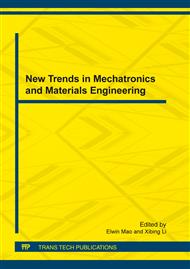p.3
p.7
p.13
p.19
p.23
p.28
p.32
p.36
The Effects of Exfoliation Corrosion on Upper Wing Skins Structural Integrity
Abstract:
Based on initial discontinuity state (IDS) of material, this paper presents a preliminary analytical model which was developed to evaluate the effect of exfoliation corrosion on the residual fatigue life of upper wing skins. A life prediction was then carried out using constant amplitude compression dominated loading for various exfoliation corrosion levels by AFGROW, and the prediction agreed reasonably with the available test data. The result suggest that exfoliation can be treated as a process zone located initially at a surface, and then at the base of an evolving general stress concentration representing the loss of material in the exfoliation region. The major effect of the exfoliation corrosion on fatigue life is to cause a dramatic reduction in life with small corrosion depths, and most of the fatigue effect is associated with the introduction of small pits, rather than more general stress concentration associated with the bulk of the exfoliation attack. But the effect of pit on fatigue life is gradually reduced with increasing pit size. A pit with a constant depth can be applied to the model described in this paper for long exposure structure. A preliminary recommendation for the pit depth is about 0.3mm for LY12CZ.
Info:
Periodical:
Pages:
19-22
Citation:
Online since:
January 2012
Authors:
Price:
Сopyright:
© 2012 Trans Tech Publications Ltd. All Rights Reserved
Share:
Citation:


